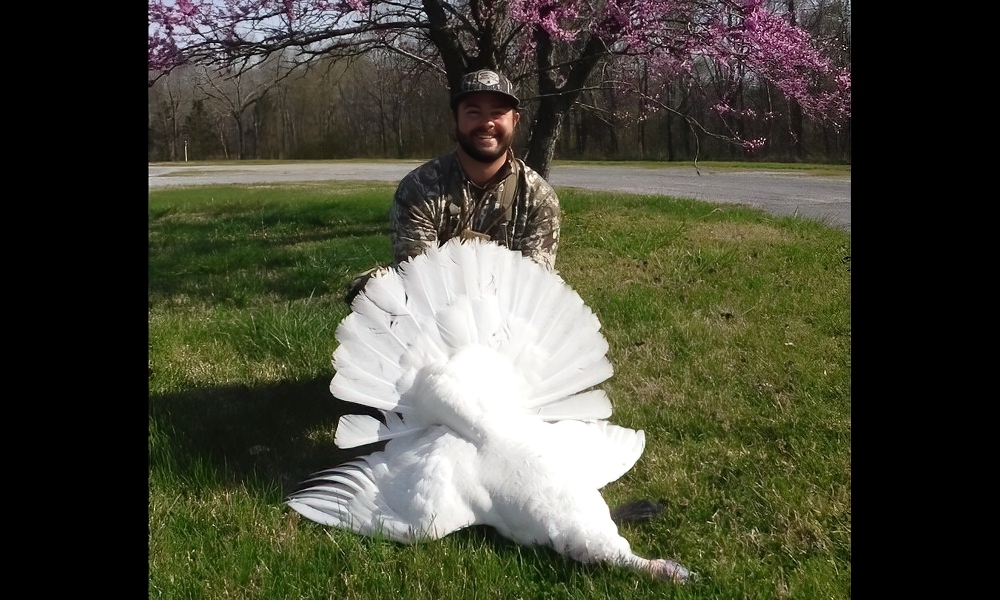News that a hunter has bagged a rare white turkey at a national recreation area is being met with criticism.
“Would be a lot more beautiful left alone to live,” reads the top comment on a Land Between the Lakes National Recreation Area Facebook post, which shows an image of the unidentified hunter posing with the turkey.
“I get white creatures are more prone to predators, but clearly it’s lived this long! Just leave beautiful things alone and let nature be nature.”
ALSO ON FTW OUTDOORS: Can you spot the rattlesnake in this photo?
Land Between the Lakes, a U.S. Forest Service property in Kentucky and Tennessee, posted this description:
“Nature comes in all colors and that was proven last week when a hunter got the turkey of a lifetime. It wasn’t the beard or the spurs that were impressive but instead its beautiful white color. The white feathers are caused by a condition call leucism, which causes a partial loss of pigmentation.”
Several types of animals can be leucistic, or partially white, versus albino animals that are all white with pink eyes. These animals are believed to be more vulnerable to predators because they stand out.
And while just about any hunting post would generate criticism by anti-hunters, comments beneath the Land Between the Lakes post pertain mostly to the uniqueness of the harvested animal.
“I eat turkey, but I can’t help but look on this with sadness,” reads another top comment. “What a beautiful bird to have been shot.”
Another: “I would have let it walk. Only way I would have shot it was with a camera. Too beautiful and rare to kill.”
The turkey was harvested legally and several comments were congratulatory.
“Congratulations on a once-in-a-lifetime bird!” reads one.
“Awesome harvest!” reads another.
But negative input seemed to dominate the comment thread.
Turkey hunting at Land Between the Lakes continues into May. Permitted hunters are required to check in with harvested birds before leaving the property.




